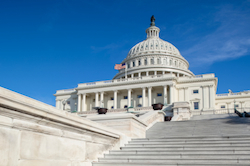
To the surprise of many, Congress reached a bipartisan agreement on the 17th of February to extend payroll tax cuts and unemployment benefits. It was only the second time a House bill in the 112th Congress split roughly along party lines, according to the New York Times.
Largely regarded as a coup for Congressional Democrats, the bill maintains a two-percentage point payroll tax cut for 160 million working Americans and provides additional unemployment benefits to millions. Republicans had wanted to fund the payroll tax with spending cuts but, facing Democratic opposition, agreed to allow the package to increase the budget deficit. Republicans also reluctantly agreed to extend the unemployment insurance program long past the date they originally sought. Republicans did, however, score concessions from the Democrats, including new limits on unemployment compensation and elimination of the preventative health spending provision of the 2010 healthcare overhaul.
Following a slew of failed negotiations between the two parties over taxes, deficit reduction, and other high-profile issues, how did this agreement manage to pass?
In February, Congressional approval ratings hovered around 13%, and polls also showed that the majority of Republican primary voters were unenthused about their choices for president. Meanwhile, President Obama’s approval rating had inched back up to about 50%. If the Republicans didn’t win on most of the details of the negotiated bill, they could at least share an election-year victory with the Democrats and try to win back some alienated voters by proving they were capable of bipartisan agreement.
From a negotiation standpoint, both parties succeeded in moving beyond their deeply entrenched positions to hammer out tradeoffs and concessions. Overall, the deal attests to the power of interested observers – in this case, the voting public – to shape what happens at the bargaining table.



